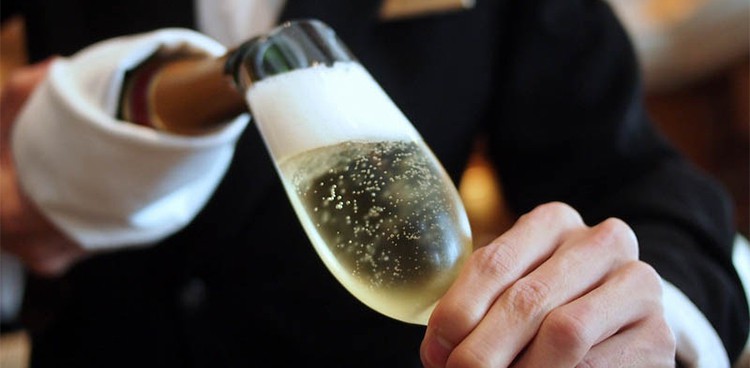
It started when Artisanal Cheese Center moved in down the street from our Manhattan offices. Instead of getting cake for an office birthday, my boss ran over to the cheese mecca for a single perfect Époisses. Common wine advice for Époisses calls for something like chardonnay, but the occasion was a good excuse for bubbles. As it turns out, stinky cheese and Champagne beats cake, hands down.
This tradition could bankrupt a person if it gets out of hand, but I’ve found that it’s getting easier to find great Champagne at reasonable prices. The key is to search out what have come to be known as “grower Champagnes.” These small brands are made by people who grow their own grapes in addition to making the wine. Not only are they cheaper than most of the usual suspects, but they can be more interesting, too.
Growing grapes might seem like an integral part of making wine, but in the Champagne region, most wineries buy them from growers all over the region. By blending grapes from different areas and wines from different vintages, they’re able to produce a consistently good product in a challengingly cool, dreary climate. Houses differentiate themselves from their competitors by creating a hallmark style they blend to every year.
This has created a curious hierarchy in Champagne, where he who has the most access to the most vineyards wins. Today, the handful of wineries with the most purchasing power put out about 80 percent of all the Champagne on the market—almost everything you see on the average wine list.
Grower Champagnes are made by people who got tired of seeing their grapes blended into anonymity. Vintners such as Anselme Selosse, one of the first renegades in the early ’80s, believed their little parcels of land could put out wine with its own unique personality, full of terroir, or sense of place. First, he reverted his family’s estate, Jacques Selosse, to organic farming, low yields, indigenous yeasts, and minimal sulfur and sugar additions—all things that tend to go by the wayside when scaling up to the industrial production levels of the big names. Now he makes wines that sell for as much as any of those major labels but offer a different experience of Champagne, one in which the vineyard speaks volubly, in tones of crunchy minerals, cold limestone, and dry chalk against ethereal fruit; almost more like wines that happen to have bubbles than bubbly wines.
Today there are plenty of “récoltant-manipulants,” as they are denoted on wine labels, that don’t yet command three-digit prices. The best of these are intriguing in similar ways to great artisanal cheese: they may not be as smooth and spotless as the industrially made examples, but their irregularities make them that much more interesting. Plus, that tendency to taste more like wine-that-happens-to-be-sparkling gives them the heft and complexity to stand up to complex cheeses.
Making Champagne, however, is an arduous process, so it never comes cheap, and the exchange rate certainly isn’t helping. It is possible, however, to find wines made in the exact same manner as true Champagnes from Champagne, and from winemakers who grow their own grapes, here in the United States. Here’s a list of some of the more affordable—and most delicious—grower Champagnes and sparkling wines out there, with the importer of the various Champagnes listed as well, where available.
Champagne
- Franaoise Bedel Champagne Dis Vin Secret ($28)
Jon David Headrick Selections, Asheville, N.C. - Chartogne-Taillet Champagne Cuvee Sainte-Anne Brut ($46)
Terry Theise Selections/Michael Skurnik Wines, Syosset, N.Y. - Diebolt-Vallois Brut Blanc de Blancs ($49)
Martine’s Wines, Novato, Calif. - Pascal Doquet Champagne Brut Rose Premier Cru ($62)
Robert Kacher Selections, Washington, D.C. - Bruno Gobillard Champagne Brut Vieilles Vignes ($64)
Veritas Imports, Beverly Hills, Calif. - Godme Pere et Fils Champagne Brut RÈserve Premier Cru ($45)
Sherbrooke Cellars, Scarsdale, N.Y. - Marc Hebrart Champagne Brut Selection Premier Cru ($46)
Terry Theise Selections/Michael Skurnik Wines, Syosset, N.Y. - Thierry Massin Brut Selection ($45)
Willette Wines, New York, N.Y. - Camille Saves Champagne Brut Rose Grand Cru ($55)
Polaner Selections, Mount Kisco, N.Y., and Triage Wines, Seattle, Wash.
U.S. Selections
- Gruet Blanc de Blancs, Methode Champenoise ($25; Albuquerque, N. Mex.)
- Iron Horse Classic Vintage Brut 2003 ($33; Green Valley, Calif.)
- Thomas Fogarty Blanc de Blancs 2000 ($32; Santa Cruz Mountains, Calif.)
- Lenz 2001 Methode Champenoise Cuvee ($30; North Fork, Long Island, N.Y.)
- Soter Beacon Hill Brut Rose 2004 ($45; Yamhill County, Ore.)
Bubbly Goes with Bold Cheeses
Not everyone thinks Champagne and stinky cheese are a great match. “Sparkling wine will make a strong cheese stronger,” the guy behind the cheese counter at Murray’s Cheese in New York City recently told me, vehemently shaking his head when I pressed him for a cheese with more edge than the one he was proffering. If you like funk, then Champagne and Époisses is not a bad thing.
And when it comes to cheeses that are simply superrich—think of a triple-creme such as Pierre Robert, for instance—there are few more hedonistic pairings. The wine’s acidity and bubbles act like little scrub rushes, gently scraping the milk fat from your tongue, readying it for more.
Saltier cheeses are the most challenging, as the acid in the wine accents the saline quality. Slightly sweeter sparkling wines will handle salt with more grace; think of a mild Prosecco, for instance, with Parmigiano-Reggiano, or an off-dry Cava with a slice of Manchego.
Feature Photo Credit: CCFoodTravel.com via Compfight cc




